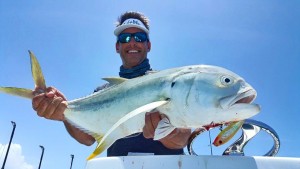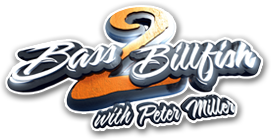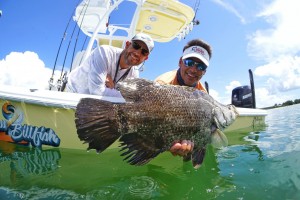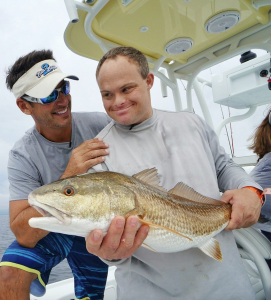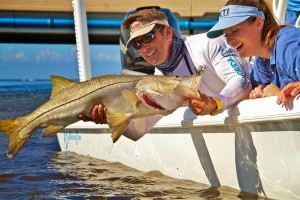A Florida favorite: jack crevalle
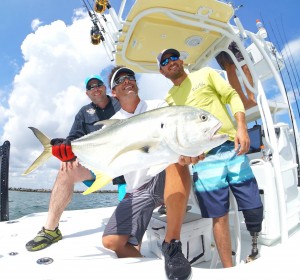
Although sometimes overlooked and considered less desirable than some of the other great game fish we have in Florida. Jack crevalle one of the toughest fighting, abundant species around. I’ve heard captains affectionately call this fish a “muscle with a tail,” “canal tuna” or “tourist tuna” because the jack crevalle is a crowd pleaser and can save the day when nothing else is biting. Here’s the scoop on one of Florida’s favorite gamefish.
Jacks range in size from about 1 lb. to their max size around 30 lbs. Their geographical range spans the entire Florida coastline, with the largest species caught traveling in pairs or small schools near offshore wrecks and reefs. Smaller fish in larger schools can be found virtually anywhere including the intracoastal waterway. A great place to find jacks is the entrance to inlets, canals and waterways. A great way to find jacks is to look for the birds. A hungry school of jacks will drive schools of baitfish to the surface. Pelicans and seagulls will dive and pick up scraps and baitfish.
Jack’s are not picky when it comes to bait. They can be caught on a variety of live and dead baits, lures and on fly. One of the most exciting times to catch these fish is during the mullet migrations. As mullet migrate down the coast, all types of predators capitalize. Jacks are particularly abundant and during the mullet run you can catch jacks off the beach and on piers and seawalls. One quick tip – a hungry jack school will push baits against a seawall and will strike multiple times. Reel your bait and lure all the way to the rod tip before taking another cast.
Generally speaking, they like their baits to be fast moving – especially larger fish. Smaller fish can be taken on light spinning or baitcasting gear. Larger fish require heavier tackle and a 20-30 lb. leader. As for lures and flies – jerkbaits, soft plastic (zoom flukes) and poppers work very well in a fast-paced STOP-GO, STOP-GO method. On fly, any type of clouser, deceiver or streamer will work the key is to strip very fast.
Perhaps the reason jacks are considered less desirable than some other species we have in our waters because they’re frowned upon as table fare. Jack crevalle’s flesh is blood-red due to muscle content. The appearance turns most away…but if you do decide to cook your catch, keep the smaller fish. Ice your catch quickly, fillet them, cut out the blood line and soak the fillets in milk. This will draw the blood out of the flesh. Although there are plenty of other better eating inshore fish in Florida like redfish, trout and black drum…if you are adventurous, give jack crevalle a shot on the grill.
